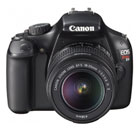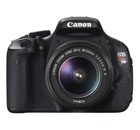Rabu, 30 Maret 2011
Kamis, 24 Maret 2011
Tricks to Develop Landscape Photography
This sort of photography force be arduous by the side of times, except proviso you go along selected tips, it would not solitary force to your assignment easier except additionally it would stop you to get better also enhance your landscape photography.
Keep the horizon horizontal
It almost not matters everyplace or come again? you are shooting, emphatically make certain with the intention of the horizon is level. observably proviso you are all the rage the rocky or undulating region, at that moment the skyline would not be horizontal, still you would find to get better whether the image is acceptably or not. representing the digital photos, you bottle fix the failing all the rage the software, even though by means of responsibility this you would mislay the explanation with in addition the edges would be cropped
It almost not matters everyplace or come again? you are shooting, emphatically make certain with the intention of the horizon is level. observably proviso you are all the rage the rocky or undulating region, at that moment the skyline would not be horizontal, still you would find to get better whether the image is acceptably or not. representing the digital photos, you bottle fix the failing all the rage the software, even though by means of responsibility this you would mislay the explanation with in addition the edges would be cropped
Over exposure clothed in the snow
This force be strange, for example the blizzard exhibit heaps of ignite also the camera is fooled in the midst of the idea with the intention of it is self-same clear moreover along these lines it reduces the exposure accordingly. thus the blizzard comes for instance old as well as additional niceties wait dark. except in attendance are a number of cameras, which boast the regular settings with the intention of mindlessly above expose.
This force be strange, for example the blizzard exhibit heaps of ignite also the camera is fooled in the midst of the idea with the intention of it is self-same clear moreover along these lines it reduces the exposure accordingly. thus the blizzard comes for instance old as well as additional niceties wait dark. except in attendance are a number of cameras, which boast the regular settings with the intention of mindlessly above expose.
Move more or less representing the paramount shot
If you are captivating the photo of a bit which is in attendance representing detail epoch representing example: rainbow, sunset, than you must start something like to find the greatest shot. immediately sad not many steps plus bottle achieve a enormous destiny of difference. as well as proviso you are with the digital camera, at that moment click countless photos commencing every single one the viable tips afterward besides in the midst of discrete settings, for instance elongated because you got reminiscence all the rage the camera, it would not expense you extra, in a while you bottle remove the uninvited photos.
If you are captivating the photo of a bit which is in attendance representing detail epoch representing example: rainbow, sunset, than you must start something like to find the greatest shot. immediately sad not many steps plus bottle achieve a enormous destiny of difference. as well as proviso you are with the digital camera, at that moment click countless photos commencing every single one the viable tips afterward besides in the midst of discrete settings, for instance elongated because you got reminiscence all the rage the camera, it would not expense you extra, in a while you bottle remove the uninvited photos.
Subject
Most of the ancestors engage photos of the family unit clothed in the social class of an weighty landmark. except merely ponder you bottle click the family unit photograph anyplace next anytime. except you would not progress an chance to click with the intention of exact landmark. achieve not sacrifice the clarity after that focus of the landmark.
Most of the ancestors engage photos of the family unit clothed in the social class of an weighty landmark. except merely ponder you bottle click the family unit photograph anyplace next anytime. except you would not progress an chance to click with the intention of exact landmark. achieve not sacrifice the clarity after that focus of the landmark.
Natural techniques
The universal performance worn by means of landscape photographers furthermore artists is the procedure of unaffected line. This bottle be a river, road, procession of a hierarchy or the fence.
The universal performance worn by means of landscape photographers furthermore artists is the procedure of unaffected line. This bottle be a river, road, procession of a hierarchy or the fence.
Golden hours
You obligation comprise heard the golden-haired hours clothed in photography. It is truly correlated by an hour formerly the the end of the day in addition to like the sunrise. countless photographers have faith in with the intention of this happens to be a paramount epoch to click photos. by the side of this epoch you bottle find a number of steamy in addition to cloud things clothed in your photographs.
You obligation comprise heard the golden-haired hours clothed in photography. It is truly correlated by an hour formerly the the end of the day in addition to like the sunrise. countless photographers have faith in with the intention of this happens to be a paramount epoch to click photos. by the side of this epoch you bottle find a number of steamy in addition to cloud things clothed in your photographs.
Landscape photography tips
While most people and animals won’t sit still for a second, landscapes don’t move an inch. That gives you the opportunity to set up a tripod at exactly the right spot, setting it to the right height, take multiple exposures lasting longer than 20 seconds, and control almost everything to perfection. If one shot fails miserably with exposure, indicated by a blinking highlight warning from your camera, just take another shot.

But don’t landscapes change at all? Well, yes they do.
First, the light will change during the day.
Second, the clouds can make a big difference. A dull scenery, with a cloud moving on for five minutes letting the sun shine through the right way, could make vivid spectacle.
Third, there could be additional dynamic elements in the picture, like an eagle flying in the air, or a boat tranquilly floating on the river.
Flaws to avoid with landscape photography
While a broad view can be interesting, don’t automatically use a wide angle lens and try to include everything in your photo. Then the really interesting parts of the photo can get lost in the overall picture. Instead choose an interesting part of the scene, and frame your photo accordingly to simplify the photo.If your image wants to convey the beauty of nature, human constructed elements like a shiny red car or a white fence might well spoil the mood. When possible try to get rid of that. Try to find a spot where that traffic sign at the center of the landscape stands right behind a tree, just wait 2 minutes till that red car has driven away. But human elements don’t always have to ruin a landscape photo. Curly roads could be excellent leading lines, and visible human figures walking around can point out the vastness of the scenery.Remember to have the camera horizontal. It is very awkward to have a landscape photo with the horizon tilted.
Oddities with landscape photography
 Sometimes there are strange objects like dead trees with curling branches. When walking closer they can make a fine foreground. A living tree bending over so much, that let’s the viewer wonder why it hasn’t fall yet, makes a diagonal that brings some dynamic in the image.Weather is of great help with oddities. Mist can create a calm or mysterious atmosphere. Mist above a lake can hide the horizon and take away the expected clear distinction line between the lake and the sky.
Sometimes there are strange objects like dead trees with curling branches. When walking closer they can make a fine foreground. A living tree bending over so much, that let’s the viewer wonder why it hasn’t fall yet, makes a diagonal that brings some dynamic in the image.Weather is of great help with oddities. Mist can create a calm or mysterious atmosphere. Mist above a lake can hide the horizon and take away the expected clear distinction line between the lake and the sky.- Watch for repetitions in the landscape.

- Lakes can generate marvellous reflections of trees and mountains, an unusual rotated extra view of subjects.Normally you can’t see sun beams, but when clouds break, sun beams create an orchestra of diagonals. And of course rainbows are a colorful addition.
Extremes with landscape photography
When looking for extremes, landscapes are the natural place to be.In freezing winter there is ice on the lakes, heaps of snow making it a drastic different scene.Show the height of mountains, the vastness of a flat landscape. People or objects with familiar size can be used to emphasize the scale of the photo. Besides that they can be used as a focal point.
 The landscape can also extraordinary parts, like very steep mountains.Ultra wide panoramas with an ultra wide angle lens or by stitching multiple photos together in the digital darkroom gives a fascinating view with giant impact. If you want to stitch multiple photos together if there is any tilt to the camera, vertical lines will converge. This will make it very difficult in the digital darkroom. So be sure that your camera is exactly horizontal by using a level attached to the hot shoe of your camera. If the camera is switched to auto exposure, the different shots can have a different exposure settings that have to be adjusted afterwards. Manual exposure can prevent that.
The landscape can also extraordinary parts, like very steep mountains.Ultra wide panoramas with an ultra wide angle lens or by stitching multiple photos together in the digital darkroom gives a fascinating view with giant impact. If you want to stitch multiple photos together if there is any tilt to the camera, vertical lines will converge. This will make it very difficult in the digital darkroom. So be sure that your camera is exactly horizontal by using a level attached to the hot shoe of your camera. If the camera is switched to auto exposure, the different shots can have a different exposure settings that have to be adjusted afterwards. Manual exposure can prevent that.
The New Digital SLR Cameras of 2011
The new digital SLR cameras of 2011 should have features that please just about every type of photographer.
From landscape enthusiasts to portrait professionals, the new crop of cameras include advanced autofocus systems, short response times and extensive manual controls.
Those who also want to capture video will find a lot to like since the HDSLR - an SLR that shoots video - is now the norm.
So which one to choose?
Follow your instincts about what you'll take pictures (and videos) of most often, and then see if the camera's feature set is complimentary (and if the price is right).
For example, let's say you want to travel with your camera: pay attention to the dimensions and weight to find the models that won't give you back pain if you carry them all day.
Maybe you want to take pictures of your children: for this, a flexible LCD is a real benefit, since you can hold the camera at their eye level and you can compose your picture without having to get your knees dirty.
2011 Digital SLR Timeline
Here are the release dates for the new digital SLRs of 2011 (so far):
| CAMERA MODEL | RELEASE DATE |
|---|---|
| Canon Rebel T3 1100D | March |
| Canon Rebel T3i 600D |
New cameras will be added to this list as they are announced.
Main Features
Now for a quick introduction to the high-level features available on each new digital SLR of 2011 (cameras are listed in release order).
| CAMERA | OVERVIEW | FEATURES | PRICE |
|---|---|---|---|
Canon Rebel T3 1100 | This basic entry-level camera has a pared-down feature set in order to keep the kit price relatively low. A simple HD movie mode is a new feature added since the previous Rebel 1000D. |
| $600 USD |
Canon Rebel T3i 600D | The most prominent new feature on the T3i is a flexible high-resolution flip and twist LCD screen. The T3i also adds some new and improved modes for beginning photographers. |
| $900 USD |
Movie Mode
If you're new to the world of DSLR video, take a quick look at the HDSLR jargon page to come up to speed. Then come back to this page to see how the new digital SLRs of 2011 compare.
While I've listed the highest quality video each camera can capture in the table above, I also thought it would be helpful to show a chart that JUST compares ALL of the different video options.
| CAMERA | 1080p24 | 1080p30 | 1080i60 | 720p30 | 720p24 | 720p60 |
|---|---|---|---|---|---|---|
| Canon T3 1100D | ||||||
| Canon T3i 600D |
The Best Digital SLR of 2010
Five years ago, picking the best digital SLR of the year was a relatively easy task.
There weren't all that many different cameras to choose from, and often one of the cameras released during the year really stood out from the rest thanks to a special innovation or unique feature set.
In 2010, picking a diamond from the rough is not so straightforward.
The digital SLRs released in 2010 all have impressive features - dust control, image stabilization, movie modes, high-speed autofocus - and there are a variety of cameras designed to appeal to different types of photographers (beginners, intermediates, advanced enthusiasts, etc.).
So, selecting the best digital SLR of 2010 is much more subjective than it has been in the past.
When picking the best DSLR of the year, I often go looking for cameras that aren't just following the pack but instead introduce some new feature or function that has the potential to dramatically alter how people capture images with these cameras.
I was looking for innovation, and I certainly found it in the best digital SLR of 2010.
The Contenders
The big trend of 2010 was to turn the DSLR camera into a hybrid: one that could take BOTH still images and video.
It became abundantly clear that High Definition video in DSLR cameras is here to stay, as all but two of the cameras released in 2010 include a video mode.
If you're looking for a DSLR without video, then you'll have to hunt around for older models. Some of the digital SLRs of 2009 can still be purchased new, but many of them are becoming scarce.
Let's take a look at what the new DSLRs of 2010 had to offer:
| RELEASE MONTH | CAMERA | NOTES |
|---|---|---|
| April | Canon T2i 550D | The sequel to the T1i 500D, the T2i has a wider LCD screen, more control over video exposure and an external microphone port for improved audio. |
| July | Sony A290 | This ultra-basic camera leaves off features - like a movie mode - to keep the price down and make it a more affordable DSLR option. |
| Sony A390 | A slight move up from the A290, this camera has live view (the A290 does not) and a flexible LCD screen for high and low-angle shots. | |
| September | Canon 60D | The first Canon DSLR to include a flexible rotating LCD screen, the 60D also gives you manual exposure and audio control when capturing movies. |
| Nikon D3100 | The small and light D3100 packs in a live view mode and Full HD 1080p movie mode that were missing from its predecessor, the D3000. | |
| Olympus E-5 | The weather-sealed frame of the E-5 keeps out moisture and dust and a new HD 720p mode lets you capture videos using the flexible LCD. | |
| Sony SLT-A33 | By replacing the optical viewfinder with an electronic one, the SLT-A33 is able to have fast autofocus in live view mode and when recording movies. | |
| October | Nikon D7000 | Built for rugged use, the D7000 can rip through 6 photos per second while leveraging a 39-point autofocus and a high ISO of 25600. |
| Pentax K-r | Although a basic camera (and therefore less expensive), the K-r includes an HD 720p movie mode, 6 photo per second speed and a max ISO of 25600. | |
| Pentax K-5 | The more advanced K-5 has the greatest ISO range (80 to 51200), captures Full HD 1080p movies and is weather and cold-proofed for use in extreme conditions. | |
| Sony SLT-A55 | Slightly more advanced than the SLT-A33, this model has a higher megapixel count and can capture photos faster (10 per second) |
And The Winner Is...
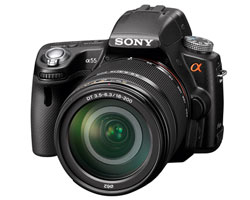
My pick for the best digital SLR of 2010 is the Sony SLT-A55.
Without further clarification, this might seem like an odd choice.
After all, there are some pretty impressive contenders in the lineup above like the Canon 60D with its flexible LCD, the Nikon D7000 with its high-speed autofocus and the weather-sealed Olympus E-5 and Pentax K-5.
However, what the SLT-A55 may lack in name recognition it makes up for in the realm of innovation.
I'll explain what is so interesting about this camera - and why it has such potential - in the paragraphs that follow.
Mirror, Mirror In the Camera
Let's take a look at an issue that has plagued digital SLRs since they were first released.
Inside the body of a digital SLR camera, there is a mirror. This mirror sits in front of the camera's sensor, and it reflects light up to a system of mirrors (either called a pentaprism or pentamirror) that bends the light by 90 degrees so that when you put your eye to the viewfinder you see EXACTLY what the lens sees.
If you whip the camera around with your eye up to the viewfinder, the view is just the same as if you didn't have a camera in front of your face.
For many years, the ONLY way you could compose pictures with a DSLR was to use the viewfinder - you could not use the LCD. However, you COULD use the LCD to compose photos on every compact camera.
The problem was that mirror - since it was sitting in front of the sensor and reflecting light up to the viewfinder, the sensor could not send a "live view" image to the LCD at the same time.
"Live" View
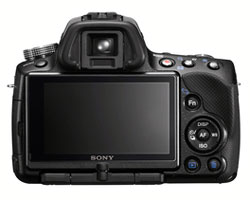
Suddenly, there was a breakthrough in the thinking about how a DSLR should work.
Somewhere it occurred to some camera-building engineer that "if I could just get that darn mirror out of the way, THEN the SLR could have live view just like a compact."
And so, the "live view" DSLR was born.
On a live view SLR, the mirror flips up out of the way of the sensor when you switch to live view mode. While this blocks the viewfinder, it enables the sensor to feed a live image to the camera's LCD screen.
This same live view functionality is what has led to the HDSLR revolution: also known as the ability to shoot video with an SLR camera.
However, there's one HUGE problem to many live view systems, and I'll explain what that is next.
Goodbye, Fast Autofocus
A digital SLR's multi-point autofocus system resides within the system of mirrors that bends the light in the viewfinder.
See the problem yet?
Any time a camera is in live view mode and the mirror is UP, the mirror blocks the camera's sophisticated autofocus system.
The first crop of DSLRs with live view forced you to focus manually because of this problem - the current generation of cameras do have live view autofocus but (here's the catch) it's the same autofocus used by many compact digital cameras (also called contrast-detection autofocus).
In a word, it's slow.
So now you have a choice: you can either take still images using the viewfinder and the benefit of a lightning-fast autofocus OR you can take pictures and video using the LCD with an autofocus that's as slow as you compact camera.
However, if you get a Sony SLT-A55, then you don't have to compromise.
Single Lens Transparent
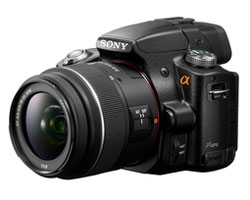
This is what Sony's SLT acronym stands for, and it makes sense once you know that the mirror inside the camera in front of the sensor is partially transparent.
Some of the light that strikes the mirror reflects up to the viewfinder and some passes through to land on the sensor.
Net result: a live view and movie mode with a speedy autofocus that you'd expect from a DSLR camera.
This semi-transparent mirror is also what gives the SLT-A55 the ability to grab consecutive still images at a rate of 10 per second. Since the mirror doesn't have to move out of the way for every shot, this ultra-fast consecutive speed is possible.
This mirror system does come with one drawback: the viewfinder is now electronic rather than optical, which makes it harder to track fast-moving subjects though the viewfinder.
If you'd rather use the large LCD screen rather than the dinky viewfinder to compose your images, then this won't be much of an issue.
More Than a Mirror
If the SLT-A55's only claim to fame was its innovative mirror, that might be enough for some.
But in today's competitive DSLR environment, the SLT-A55 has to have a few more tricks to appeal to a variety of photographers.
One such trick is a feature called Sweep Panorama.
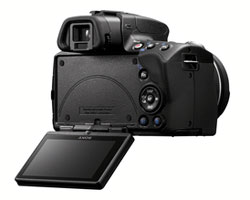
In the "old days" if you wanted to create a panoramic image, you had to take multiple consecutive shots while moving the camera either horizontally or vertically across the landcape.
Then you'd have to use an image editing program and - depending on the size and scope of your panorama - spend a good deal of time stitching all those individual shots together into a single massive image.
The Sony SLT-A55 lets you create panoramic images by pressing and holding the shutter release and then "sweeping" the camera across the view.
Do you enjoy travel and like being able to pinpoint where you've taken a particular photo?
Then the built-in GPS of the A55 should suit you well. It keeps track of location information (longitute, latitude) for every shot you take.
Finally, if you like taking photos from all sorts of angles (shot from the hip, above your head) then you can use the articulating LCD screen to frame shots even when the camera's not at eye level.
In Summary
As you can see, the main reason that I selected the Sony SLT-A55 camera as the best digital SLR of 2010 is because of its innovations.
With its semi-transparent mirror, flexible LCD, fast live view autofocus, panoramic sweep and built-in GPS the A55 has a lot to offer to all sorts of photographers from action junkies to portrait enthusiasts.
Some will argue that it's not a "true" SLR (since it lacks the optical viewfinder), but I feel this camera shares so many features of an SLR that it really falls into the same category.
Only time will tell how well the SLT format catches on - and whether or not any other manufacturers adopt the same idea.
Regardless, the SLT-A55 provides a unique solution to a problem that has impacted the useability of DSLRs for a very long time.
Langganan:
Postingan (Atom)
















